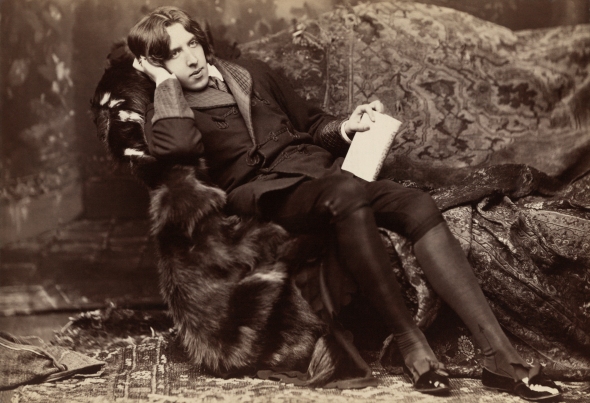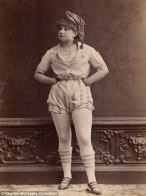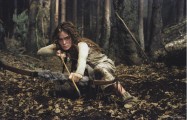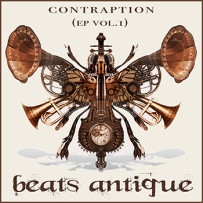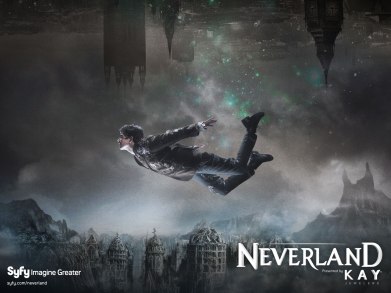Quotable Quotes by Oscar Wilde

1. I think that God, in creating man, somewhat overestimated his ability.
2. The world is a stage, but the play is badly cast.
3. Always forgive your enemies; nothing annoys them so much.
4. It is absurd to divide people into good and bad. People are either charming or tedious.
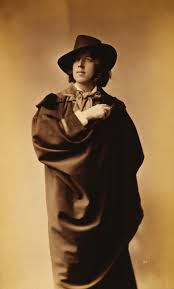 5. The only thing to do with good advice is pass it on. It is never any use to oneself.
5. The only thing to do with good advice is pass it on. It is never any use to oneself.
6. Some cause happiness wherever they go; others whenever they go.
7. What is a cynic? A man who knows the price of everything and the value of nothing.
8. A little sincerity is a dangerous thing, and a great deal of it is absolutely fatal.
9. When I was young I thought that money was the most important thing in life; now that I am old I know that it is.
 10. There are only two tragedies in life: one is not getting what one wants, and the other is getting it.
10. There are only two tragedies in life: one is not getting what one wants, and the other is getting it.
11. Work is the curse of the drinking classes.
12. Anyone who lives within their means suffers from a lack of imagination.
13. True friends stab you in the front.
14. All women become like their mothers. That is their tragedy. No man does. That’s his.
15. Fashion is a form of ugliness so intolerable that we have to alter it every six months.
16. There is only one thing in life worse than being talked about, and that is not being talked about.
17. Genius is born—not paid.
18. Morality is simply the attitude we adopt towards people whom we personally dislike.
19. How can a woman be expected to be happy with a man who insists on treating her as if she were a perfectly normal human being?
 20. A gentleman is one who never hurts anyone’s feelings unintentionally.
20. A gentleman is one who never hurts anyone’s feelings unintentionally.
21. My own business always bores me to death; I prefer other people’s.
22. The old believe everything, the middle-aged suspect everything, the young know everything.
23. I like men who have a future and women who have a past.
24. There are two ways of disliking poetry; one way is to dislike it, the other is to read Pope.
25. Quotation is a serviceable substitute for wit.
So You Thought the Victorian Era was Chaste? Check Out These Pictures…

Okay, okay, these lovely burlesque dancers are still pretty modest by today’s standards, but I find the primness of the steam era often overshadows the diversity of human experience. People were engaging in all kinds of behaviors and enjoying many different forms of entertainment back then the same way they do now. I ran across this collection of photos on The Daily Mail, and I couldn’t wait to share them with you! (For the Daily Mail article click here.)
In case you haven’t checked my About the Author page yet, I first learned about Steampunk because I have a friend who is a burlesque dancer and she was in a themed show a few years ago. She taught me both about burlesque and Steampunk before I saw her show and I am definitely hooked on both now. Going to see a burlesque show is not at all the same as going to a strip club. The word has its roots in the italian word, burla, meaning “mockery”, and has more in common with a vaudeville show than a seedy bar. Though it is true that people remove their clothing for the sake of entertainment, you will often see jugglers, magicians, comedians, singers and dancers in addition to the main event. The tone of a burlesque strip tease is also totally different than say, a lap dance at a bachelor party. Burlesque dancers actively engage the audience and solicit applause for each piece they remove before they will move on. There is a flirty exchange between dancer and onlookers, and I have seen several acts that are totally tongue in cheek and are as much about making the crowd laugh as it is about undressing.
If you have never been to a show, I absolutely encourage you to see one. I have been to several shows in two different countries and it is always a great time.
Take a Trip Down Memory Lane with the Earliest Footage of London
Yestervid is a super cool website that compiles footage from the earliest days of filmmaking. This montage features some of the oldest film and sound recordings around the city of London, and they have a map showing the exact location and camera angle for reference.
Spotlight on Traders: Empire Edibles

I had a wonderful time talking to traders like Claire “Skip” Peacey (pictured below) and giving out bumper stickers at the 2014 Weekend at the Asylum, and I am planning to do more of these spotlights like the one I did for Doctor Geof earlier this year.
 Our steamy business this time is all about delicious food. As you can see, this booth featured beautifully packaged goodies with a Victorian theme. Flavors like absinthe and rose are front in center in a variety of chocolates and cookies, and Steampunk author Kit Cox (aka Major Jack Union) helped Miss Emily Ladybird to design the packaging and presentation. If you are planning a Steampunk event in the UK, or you need something special for a wedding, you should definitely keep Empire Edibles in mind.
Our steamy business this time is all about delicious food. As you can see, this booth featured beautifully packaged goodies with a Victorian theme. Flavors like absinthe and rose are front in center in a variety of chocolates and cookies, and Steampunk author Kit Cox (aka Major Jack Union) helped Miss Emily Ladybird to design the packaging and presentation. If you are planning a Steampunk event in the UK, or you need something special for a wedding, you should definitely keep Empire Edibles in mind.
Links:
Empire Edibles official site There is a note on the homepage that says the website is being revamped, but there is lots of information there in the meantime.
This is my 300th Post!
My, how time flies when you’re having fun! Earlier this month I surpassed 40,000 views and 1000 likes, so thanks a lot for all of your shares and tweets about my articles. I started this site 18 months ago, and I keep finding great stuff to write about. I thought reaching my 300th post would be a good opportunity to compile links to my most viewed and shared articles in case you missed them the first time around, plus my personal favorites.
Enjoy!
Most Viewed
Van Helsing review
Brothers Grimm review, and since it was posted the Fairy Tale Guide/Drinking Game to go with the film has also been very popular
Review: Dolls of New Albion at Ed Fringe (including links to listen to the album for free! I listen to it all the time, it is an amazing soundtrack.)
Most Shared
Steampunk Sourcebook: Captain Nemo
Steampunk Scrapbook Paper: “Steampunk Botanica” and “Memories Documented”
Music to Steampunk by: Lindsey Stirling
Steampunk Assemblage Clocks (by me!)
Steampunk Sourcebook: The Statue of Liberty
My Favorite Five Posts and Pages
Making it to the Party Early Does NOT Make it Your Party, an editorial about bullying and inclusivity
A Few Thoughts About Steampunk and War, an open response to a Beyond Victoriana article which advocated that you can’t have Steampunk without violent conflict in the story.
The Tips for Makers Series, insights about using different kinds of materials from my own work as well as sessions at Weekend at the Asylum V
How to Punk Your Steam series, exploring different ways to “punk” the Victorian era.
Steampunk Sourcebooks series, fun facts and interesting information about topics related to Steampunk and historical figures
Thanks again for your support!
The Reform Club

 If you have heard of this site, it is probably because of Around the World in 80 Days. Phileas Fogg’s journey began at The Reform (as it is colloquially named) over a game of cards, and ended in dramatic fashion on the same spot. The Reform was also featured in politically-minded novel entitled Phineas Finn, which was released as a serial by notable Victorian author Anthony Trollope from 1867-1868.
If you have heard of this site, it is probably because of Around the World in 80 Days. Phileas Fogg’s journey began at The Reform (as it is colloquially named) over a game of cards, and ended in dramatic fashion on the same spot. The Reform was also featured in politically-minded novel entitled Phineas Finn, which was released as a serial by notable Victorian author Anthony Trollope from 1867-1868.
The club was founded in 1832 as a liberal bastion for people to exchange radical ideas in response to the conservative Whig Party that had held power in London for decades. For many years it was the unofficial headquarters for the Liberal Party, and boasts a huge library filled with contributions from its members. Unfortunately, the inside of the club is off-limits to non-members except for select groups that can visit during a special architectural festival in September, and the exterior is nothing special. But, you can see a few photos of the interior on their website.
“Heterosexual” is Yet Another Thing Invented in the Victorian Era

I recently ran across and article by Thomas Rogers in Salon magazine from 2012 that was an interview with Hanne Blank, the author of Straight: A Surprisingly Short History of Heterosexuality. I knew that “homosexual” was a relatively new word in our vocabulary, but I had never really thought about its counterpart, “heterosexual.” The article is all about the history of this word and the baggage that got attached to it by psychiatrists and evolutionary scientists in the early days of their crafts, aka the time period that much of Steampunk occupies. I haven’t had a chance to read Blank’s book, but I wanted to pass on a summary of the article.
The terms “homosexual” and “heterosexual” appear at the same time. According to Blank’s research, both were the invention of an Austro-Hungarian journalist writing about a piece of Prussian legislation that made certain acts between same-sex people illegal. He was trying to create two categories that were on equal footing as a way to address the hypocrisy of making some acts legal for some people, which the same acts were criminalized for others.
This was sometime in the mid-19th century, but the terminology didn’t really take off until closer to the end of the century. Thanks to the work of Sigmund Schlomo Freud (who is and will always be “Ziggy F” to me) and his acolytes during the 1880’s and 1890’s, people were suddenly being diagnosed with all kinds of crazy stuff. In regards to the term “heterosexual” Blank said it perfectly in the interview:
Psychiatry is responsible for creating the heterosexual in largely the same way that it is responsible for creating the various categories of sexual deviance that we are familiar with and recognize and define ourselves in opposition to. The period lasting from the late Victorian era to the first 20 or 30 years of the 20th century was a time of tremendous socioeconomic change, and people desperately wanted to give themselves a valid identity in this new world order. One of the ways people did that was establish themselves as sexually normative.
Ziggy F’s theories are largely a source of giggles nowadays, but when they were shiny and new they carried a lot of weight in society. The Zigster was more or less a narcissist and viewed himself to be the apex of human psychological development. Basically, if you followed his formula for ‘health’ what you arrived at was a heterosexual (and probably white) male. (Women were already hopeless cases according the F-man. He believed we were all born longing for a penis and it just went downhill from there.)
So now let’s bring romance into the equation. Keep in mind that for much of human history, “love” and “marriage” had very little to do with one another. Marriage was more often than not an alliance between families, more akin to a business arrangement than anything based on desire, and procreation was considered part of the bargain. You didn’t have sex with your partner because you WANTED to, you did it as part of your marital duties. Of course, if you desired your partner in addition to meeting the requirements of your contract then bully for you, but being attracted to your partner was not necessary to pass on the family name.
As I am sure you are aware, society at large was undergoing many changes during the Victorian period, and this is probably a big reason you find Steampunk compelling (I know this is true for me!). Cities were drawing people out of the countryside and crushing them together in close quarters. Women and people of color started to demand the right to vote. Workers began to demand better conditions and wages. And anarchists challenged the very fabric of society with their views. And when times get tough, people fall back on the simplest of relationships, the binary. Breaking a complex world into sets of two categories is much easier than investigating the gray area that lies between black and white. As Blank put it, they started to find an identity that proved their validity in a rapidly changing world.
Also, as people started to demand to be allowed to determine their own futures, they had to stop and think for the first time what it was they WANTED from life. So the question of desire and the shift to seeking out a partner because of your feelings of attraction and love came to the forefront of the discussion for the first time.
Blank’s book goes into far more detail and continues to unpack the term “heterosexual” and its relationship to gay, trans and other terminology and notions into to the present day, but I will leave off here. If you would like more information you can read the full interview, or buy the book.
